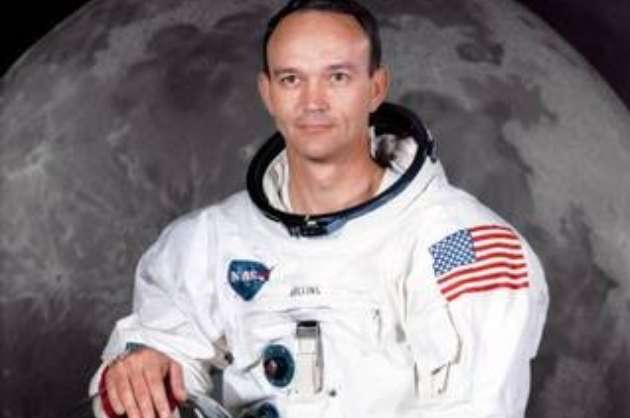By Anupama Nair
Mumbai, April 29
The silver rays of the moon had fascinated mankind from time immemorial i.e., from early man to now. In most cultures, the moon was worshipped. The beach on a full moon night is my favorite and a sight to see. Today I am going to talk about circa 1969 i.e., on July 20 an event happened “That's one small step for man, one giant leap for mankind I am talking about the day when man for the first time landed on the lunar surface. Incredible isn’t? Today is a sad day for us as Michael Collins, one of the trio who landed on the lunar surface passed away leaving a huge legacy.
The moon is often embodied in different ways and worshiped with ritual customs, however, in contrast to the sun, the moon is less frequently viewed as a powerful deity. In Indian culture, Moon was a handsome god Chandra, with 27 stars as his wife. In South America, the sun and moon are purely mythological figures. Between the Tropic of Capricorn and the Tropic of Cancer, the moon is worshipped as a goddess. Only some ancient civilizations of hunters view the moon as a god. In Egypt moon was Khons and Toth, Sin-Nanna in Babylon. In ancient Brazil, the Taulipang believe that the moon is first nourished well and then inadequately by his two wives, Venus and Jupiter in Greek mythology moon is goddess Selene. She is the daughter of the Titans Hyperion and Theia, and sister of the sun god Helios. In Roman mythology, moon goddess is called Luna.
The desire to travel to moon was a dream of the modern man. Let us see, how it was achieved. In the middle part of the 20th century, space ships were made by both America and Russia. Lyka, a stray dog from Moscow was the first living being to travel to space in a space ship called Sputnik II in 1957. But unfortunately, she died in space. Then it was the turn of man in space. Yuri Gagarin (9 March 1934–27 March 1968) was a Russian pilot, who became the first man to travel in space, achieving a major milestone in the history of space travel. His space ship Vostok I, completed one orbit of the Earth on 12 April 1961. Gagarin became an international celebrity and was awarded many medals and titles, including “the Hero of Soviet Union”, his nation's highest honor.
The 1969 was again a special year in Space journey. Apollo II (July 16–24 1969) was the space ship that first travelled with humans to the moon – Neil Armstrong (August 5, 1930–August 25, 2012), Buzz Aldrin (January 20 1930) and Michael Collins (31 October 1930—April 28, 2021), and was truly a historic moment. Finally, the dream of man to travel to the moon was fulfilled. Armstrong became the first person to step onto the lunar surface They spent about two and a quarter hour together outside the spacecraft, and collected 47.5 pounds (21.5 kg) of lunar material to bring back to earth. Armstrong's first step onto the lunar surface was broadcast on Live TV to a global audience. He described the event as "one small step for man, one giant leap for mankind." Apollo II effectively proved the American victory in the space race, by fulfilling a national goal proposed in 1961 by the great President John F Kennedy. He stated "Before this decade is out, landing a man on the Moon and returning him safely to the Earth is our dream" The Apollo II mission emblem was designed by Collins, who wanted a symbol for "peaceful lunar landing by the United States". At a friend’s suggestion, he chose the bald eagle, the national bird of the United States, as the symbol.
NASA in its statement stated” We mourn the loss of this accomplished pilot and astronaut. His legacy will always as one of the leaders who took first step into the cosmos”. His family was inconsolable and condoled “We regret to share our father and grandfather passed away today, after a valiant battle with cancer”. He published many books, “Carrying the Fire (1974)”, “Flying to the moon and other strange places (1976)”, and “Mission to Mars (1991”.
India has also launched its mission “Chandrayan”. Chandrayaan-2 is the second lunar mission developed by the ISRO, after Chandrayan 1. It consists of a lunar orbiter, and also included the Vikram lander, which were developed in India. The main scientific objective is to map and study the variations in lunar surface composition, as well as the location and abundance of lunar water. The craft reached the Moon's orbit on 20 August 2019 and began orbital positioning man oeuvres for the landing of the Vikram. The lander and the rover were scheduled to land on the side of the Moon, in the south lunar region at a latitude of about 70° south on 6 September 2019 and conduct scientific experiments for one lunar day, which is equal to two Earth weeks. A successful soft landing would have made India the fourth country after the US, Russia and Chi to do so.
However, the lander deviated from its intended trajectory while attempting to land on 6 September 2019 which caused a 'hard landing'. According to a failure analysis report submitted to ISRO, the crash was caused by a software glitch. ISRO may re-attempt a landing in 2022 with Chandrayan 3. I for one hope Indian’s land on the moon. I offer my tribute to Michael Collins.




























